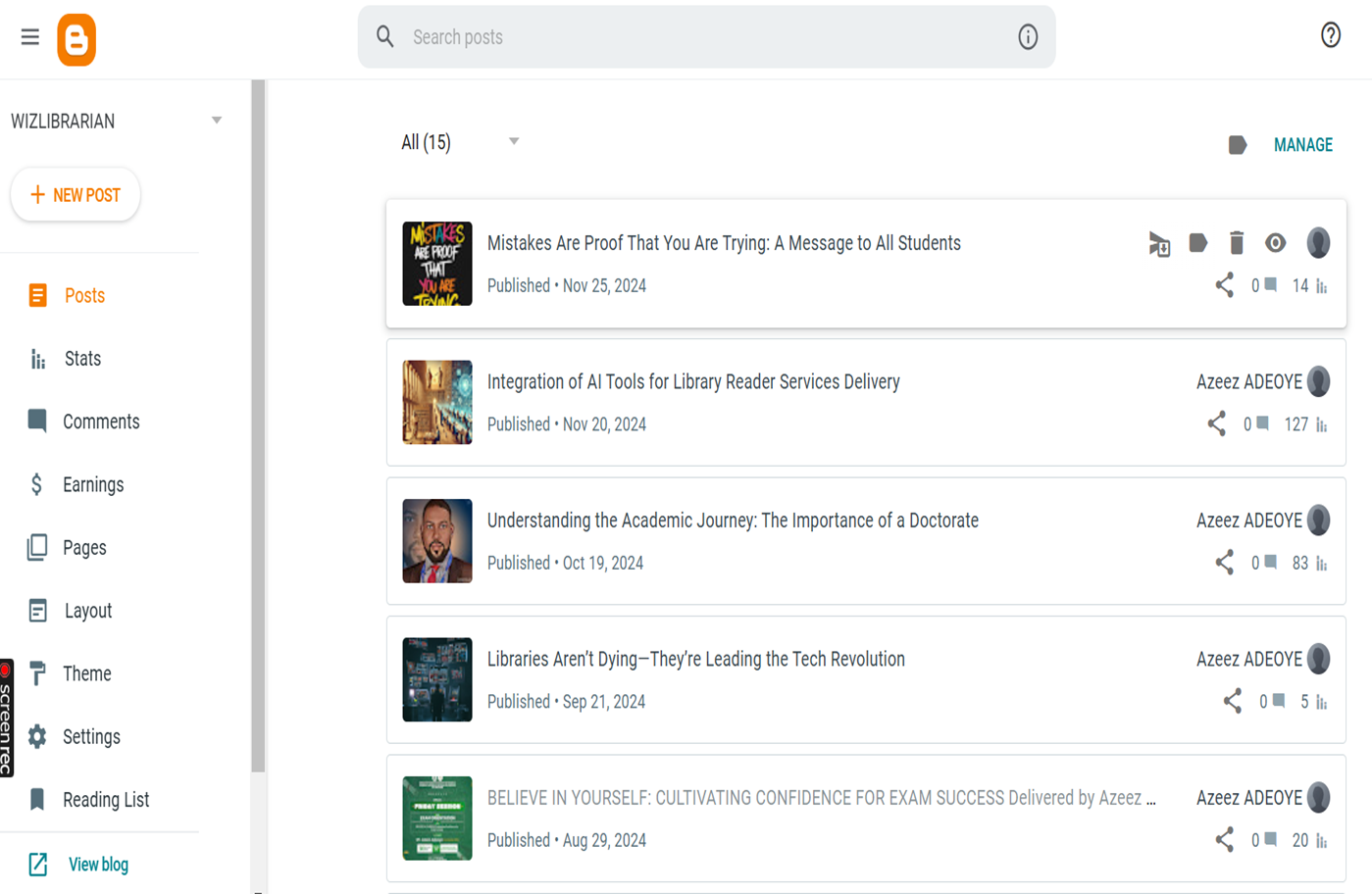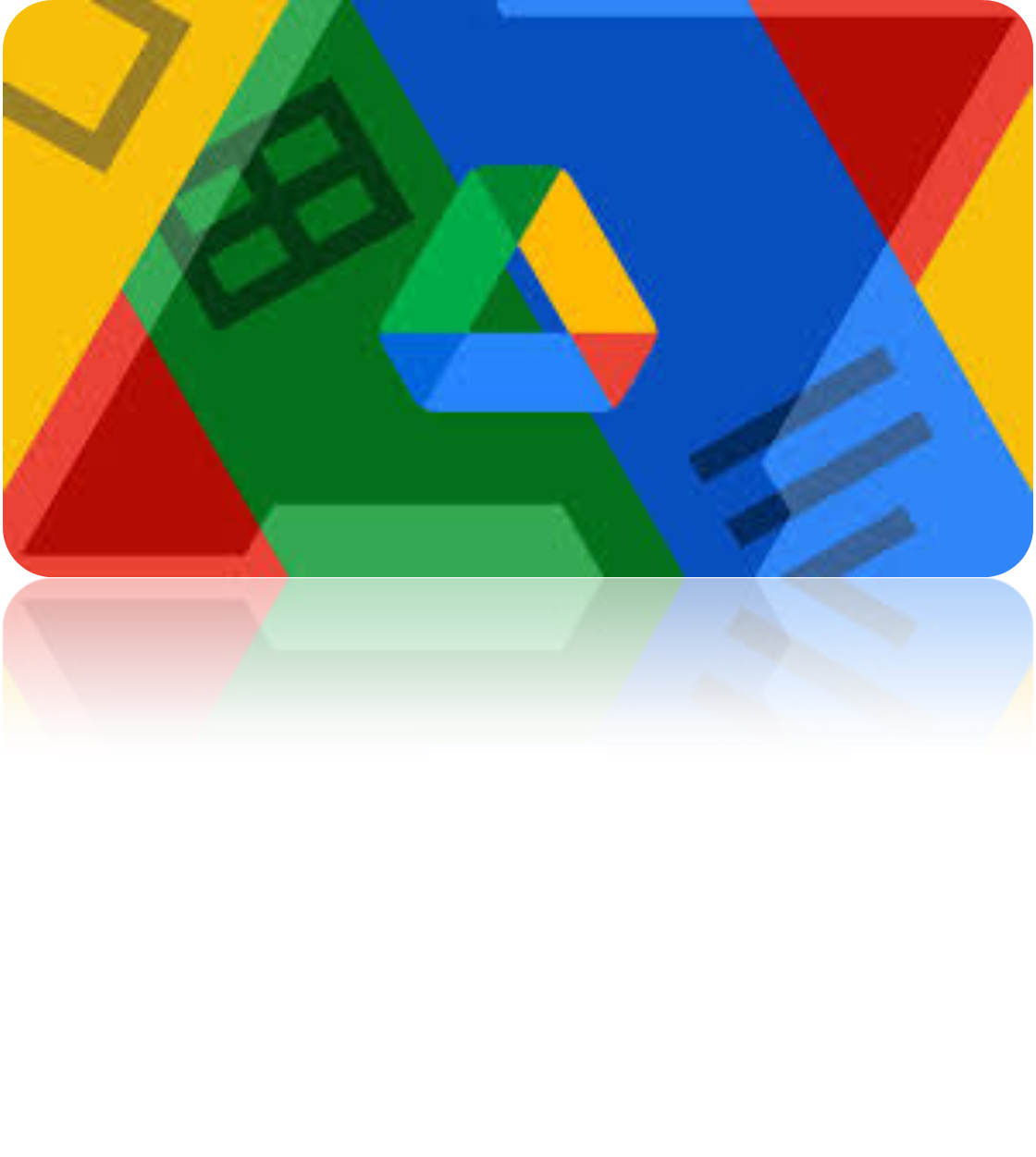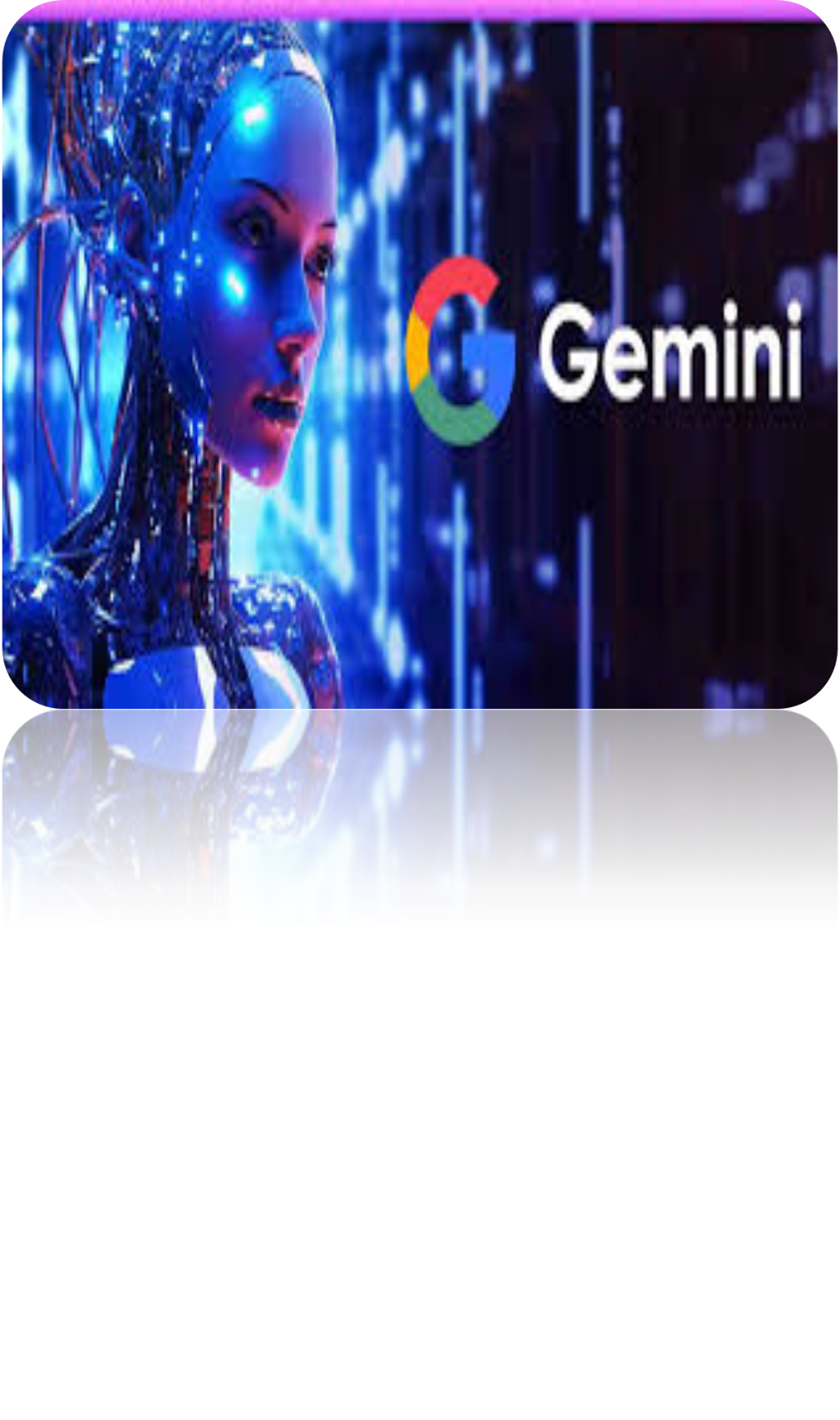Libraries have evolved over the centuries, adapting to advancements in human civilization and technological innovations. The library, as a concept, has endured from the Stone Age to the digital era, continuously shaping and reshaping itself in response to new tools of writing, communication, and information management.
The
Evolution of Libraries and Information Carriers
· Ancient
Era: Clay Tablets
· Medieval
Period: Papyrus, Parchment
· Renaissance:
The Discovery of Paper
· Modern
Age: Magnetic Tape (Audio-Visual Materials)
· Baby
Boomer Generation: Mainframe Computers
· Generation
X: Laptops, Hard Drives, Flash Drives
· Millennium
Era: Cloud Storage
· Generation
Z: Automation
· Generation
Alpha: Artificial Intelligence (AI)
As
libraries evolve, so do the professional responsibilities of librarians. With
each technological advancement, new tools emerge to enhance library services.
Some core professional tasks of librarians include:
Key Professional Tasks in Libraries
and Digital Tools
a. Collection
Development
b. Cataloguing
and Resource Management: Metadata tools such as Dublin Core, MARC
(Machine-Readable Cataloging), and RDA (Resource Description and Access)
c. User
Engagement and Service Delivery: Library websites, chatbots, virtual
assistants, and mobile apps
d. Digital
Literacy and Training: E-learning platforms, webinars, Zoom, Microsoft Teams,
Camtasia, Articulate
e. Digital
Repositories: Platforms like DSpace and Fedora
f. Data
Analytics and Decision-Making: Google Analytics, library-specific analytics
tools
g. Collaboration
and Networking: Cloud-based tools, professional networks
h. Digital
Preservation and Archiving: Digitization tools, digital archiving software
i. Content
Management and Outreach: Social media, email marketing (e.g., Mailchimp,
Constant Contact), content management systems
j. Accessibility
and Inclusivity: Assistive technologies, screen readers, text-to-speech
software, multilingual support
Types of Digital Tools for
Librarians
There
are thousands of digital applications available for library services, which can
be categorised as follows:
v Open-source
tools
v Subscription-based
tools
v Standalone
applications
v Integrated
solutions
v Basic
tools
v Advanced/complex
tools
Many
libraries operate with limited financial resources, making it difficult to
sustain fee-based digital tools. Therefore, this workshop will focus on free
and open-access applications. One of the leading providers of free digital
tools is Google, which offers a vast array of applications beneficial for
library professionals. Unfortunately, many of these tools are underutilised in
library operations.
Exploring Google Workspace for
Library Professionals
Today,
we will explore:
ü What
we know and acknowledge.
ü What
we know but fail to recognise.
ü What
we don’t know but realise we need to learn.
ü What
we don’t know and remain unaware of.
Let’s embark on this journey of
self-discovery and digital empowerment!
Google
Workspace: A Transformational Suite for Libraries
Google
Workspace, formerly known as Google Suite, is a comprehensive collection of
Google products and services designed for professional and collaborative work.
It comprises approximately 77 tools, including:
Gmail,
Google Search (including Google Scholar), Google Maps, Google Analytics, Google
Drive, Google Slides etc.
Google
Docs
Google
Sheets
YouTube
Gemini
(AI-powered assistant)
Google
Chat
Google
Calendar
Google
Meet
Google
Translate
Google
Blogger
Google
Classroom
Google
Sites
Let's Start with the Connecting
Dot: Gmail
According
to DataReportal, as of 2025, Gmail has approximately 2 billion users worldwide,
making it the leading email provider globally.
A
Gmail account serves as a gateway to all other Google products and services. To
create a Gmail account, all you need is an internet connection and a computer,
laptop, or mobile device—along with a valid phone number.
Your
email address may take different forms, such as:
Personal
email: azeezadeoyepdh@gmail.com
Institutional
email: azeez.adeoye@fuhsi.edu.ng
Sending an Email
When
composing an email, you can send messages to multiple recipients using:
"To"
– Primary recipient
"Cc"
(Carbon Copy) – Secondary recipients (visible to all)
"Bcc"
(Blind Carbon Copy) – Secondary recipients (hidden from other recipients)
Gmail Interface and Features
Gmail
includes the following sections:
Compose
– Create a new email
Inbox
– Received emails
Starred
– Marked important emails
Snoozed
– Temporarily hidden emails
Sent
– Outgoing emails
Drafts
– Saved but unsent emails
Important
– Emails marked as high priority
Chats
– Gmail chat history
Scheduled
– Emails set to be sent later
All
Mail – A combination of all emails
Spam
– Automatically filtered junk emails
Trash
– Deleted emails
Manage
Labels – Organise emails with labels
Attaching
Files and Using Google Drive
When
composing an email, you can:
Attach
files directly (up to 25MB per file)
Use
Google Drive to send larger files (up to 15GB)
Google
Drive also has upload and storage limitations:
Google
Workspace limitations: Additional storage restrictions apply to institutional
users
Additional
Gmail Features include:
Sending
links, emojis, pictures, and signatures
Setting
up automatic responses
Categorising emails into:
ü Primary
ü Promotions
ü Social
ü Updates
ü Starred
messages
ü Snoozed
messages
ü Deleted
messages
ü Marked
as read/unread
Using
email marketing tools for mass email campaigns and merged emails
Google
Workspace Tools for Librarians
· Gmail
· Google
Classroom
· Google
Scholar Profile
· Google
Analytics
· Google
Sites
· Google
Blogger
· Google
Drive
· Google
Forms
· Google
Docs
Google Classroom Setup
To
create a Google Classroom, it is advisable to use a personal
(non-institutional) email so that participants without institutional emails can
join.
Steps to Set Up a Google Classroom:
· Create
a class and issue a class code to invite participants.
· General
Settings: Configure class preferences.
· Home
Page: Manage class overview and activities.
· Streams:
Post announcements and discussions.
Classwork:
· Create
assignments
· Set
deadlines
· Track
submissions
· Schedule
classwork
· Provide
feedback and grades
· People:
Manage teachers and students (maximum limit: 250 participants)
· Google
Scholar Profile Link
Many of you may already be familiar
with Google Scholar, but here’s a quick refresher:
Best
Practices for Google Scholar Profiles:
· Use
an institutional email for registration and verification.
· Ensure
the same institutional email is linked to your publications.
· Maintain
consistency in your name arrangement as an author.
· If
you change institutions, update your email address accordingly.
· Include
your Google Scholar profile link in all research papers before publishing.
· How
to Retrieve Your Google Scholar Profile Link:
· Visit
Google Scholar: Google Scholar
· Sign
in and navigate to your profile page.
· Copy
the URL from the address bar—this is your unique Google Scholar profile link.
· Example:
Google Scholar Profile
Google Analytics: Enhancing Your
Library’s Online Performance
Google
Analytics is a powerful tool that helps you monitor and analyse how well your
library website is performing. It provides insights into:
· Number
of visitors to your website
· Most
visited pages
· Time
spent on each page
· How
users discover your website
· User
demographics and behaviour
By
understanding these metrics, libraries can improve their website content,
optimise user experience, and enhance service delivery.
Key
Analytics Metrics
Google
Analytics provides various reports to help you track performance. Some key
metrics include:
· User
Engagement
· Active
users (real-time and historical data)
· New
users
· Average
engagement time per user
· Total
website revenue (if applicable)
· User
Demographics
· Active
users by country
· Sources
of new users (e.g., search engines, social media, direct visits)
· User
activity trends over time
· Website
Performance
· Most
viewed pages and screens
· Top-performing
events (e.g., clicks, downloads, form submissions)
· Retention
rate of returning users
· Key
events tracked by platform
By
regularly reviewing these analytics, libraries can make data-driven decisions
to improve user experience and engagement.
Google Sites: Build Your Digital
Presence
In
today’s digital world, you need to be your own cheerleader—promoting your
expertise and maintaining a professional online presence. One way to achieve
this is by creating a personalised website.
Gone
are the days when you needed to spend a fortune to develop a website. With
Google Sites, anyone can create a fully functional website with zero
programming skills.
Why
Use Google Sites?
· Easy
to use (drag-and-drop functionality)
· Completely
free
· No
coding required
· Customisable
for personal branding
· Ideal
for library services, academic portfolios, and research dissemination
Libraries
can use Google Sites to:
· Share
digital resources
· Host
online workshops and training materials
· Provide
access to research guides
· Create
internal knowledge hubs for staff and students
Google Blogger: Share Your
Knowledge with the World
Google
Blogger is an excellent platform for publishing ideas, sharing expertise, and
engaging with a global audience.
As a librarian, blogging allows you
to:
· Showcase
research insights
· Educate
library users on digital literacy
· Share
book reviews and recommendations
· Promote
library services and events
· Why
Use Google Blogger?
· User-friendly
interface (no prior experience needed)
· Completely
free
· SEO-friendly
(easier to rank on search engines)
· Great
for personal and institutional branding
💡
Pro Tip: "A librarian who doesn't market their services is like a book
left unread. Use Blogger to amplify your voice!"
Google Drive: Secure Cloud Storage
for Librarians
Google
Drive is a free cloud storage service available to all Gmail users. It offers
15GB of free storage, with an option to upgrade when full.
Google
Drive provides secure backup and remote access to files from any location and
any device.
How Libraries Can Use Google Drive
a. Curate
and share eBooks with students and staff
b. Store
digitised research materials
c. Create
discipline-specific resource folders
d. Organise
and update library collections easily
💡
Example: In our library, we have digitised eBook collections arranged by
subject or discipline. The links are shared with students upon request, and
updates can be made effortlessly.
Best Practices for Google Drive in
Libraries
· Avoid
using personal emails to create institutional eBook collections.
· Enable
"Anyone with the link" access to facilitate easy sharing.
· For
personal use, scan and upload all important credentials and certificates for
secure, easy access anywhere.
Google Forms: Simplifying Online
Surveys and Data Collection
Online
questionnaires have become essential in research, event management, and
feedback collection. Google Forms provides an efficient, location-independent
way to administer surveys, making data collection seamless and analysis
straightforward with charts and tables.
Key Features of Google Forms
a. Create
and customise forms with ease
b. Preview
forms before sharing
c. Undo
and redo actions
d. Generate
and share form links
e. Publish
forms for public or restricted access
f. Survey
Responses & Analysis
Google
Forms provides real-time insights into survey responses. At a glance, you can
estimate results using visual formats such as:
📊
Pie Charts – Ideal for Likert scale questions (e.g., Strongly Agree to Strongly
Disagree)
📈
Bar Charts – Suitable for numerical ratings (e.g., 1 to 5)
Advanced
Data Analysis
For
deeper analysis, responses can be downloaded in CSV format and imported into
Excel or SPSS for statistical analysis.
Common Uses of Google Forms in
Libraries
· ✅
Conference and workshop attendance tracking
· ✅
Library event registration
· ✅
Feedback collection from users
· ✅
User opinion surveys on library services
Google Docs: Enhancing
Collaborative Writing
Google
Docs is a powerful tool that facilitates real-time, collaborative writing and
editing across different locations.
Key
Features
1. Multi-user
collaboration – Multiple users can edit a document simultaneously
2. Access
control – Assign different roles such as Viewer, Commenter, or Editor
3. Auto-save
feature – Prevents loss of work
4. Version
history tracking – Allows retrieval of previous document versions
5. Integration
with Google Drive – Easy storage and sharing
This
tool is particularly useful for academic writing, co-authoring research papers,
and team-based projects.
Gemini AI: Harnessing the Power of
Generative AI
Artificial
Intelligence (AI) is transforming the digital landscape, and Google’s Gemini is
a cutting-edge generative AI tool designed to enhance productivity, creativity,
and learning.
How
Can Gemini Help?
📌
Boost Productivity
Write
and refine emails
Summarise
meetings
Assist
with research tasks
📌
Enhance Learning
Aid
in studying and concept clarification
Generate
summaries
Translate
text and check grammar
📌
Unleash Creativity
Generate
images
Compose
songs, stories, or creative content
Experiment
with different writing styles
The
Importance of Prompt Engineering
To
get the best results from Gemini and other AI tools, it is crucial to
understand prompt engineering—the skill of asking clear, concise, and relevant
questions.
Librarians,
being information professionals, are naturally skilled at formulating precise
queries, making them well-positioned to leverage Gemini effectively for
research, writing, and information retrieval.
💡
Tip: Gemini can also generate images—provided you give the right prompt!
Final Thoughts
With
tools like Google Forms, Google Docs, and Gemini AI, librarians can:
✅
Streamline data collection and analysis
✅
Enhance collaborative research and writing
✅
Leverage AI for productivity and creativity
🚀
Embrace these digital tools to stay ahead in the evolving information
landscape!
Parting Words: Embrace the Future,
Lead the Change!
Librarians
are no longer just custodians of books—we are architects of knowledge, digital
navigators, and innovators shaping the future of information access.
The
world is evolving, and so must we! The tools we have explored today are not
just conveniences; they are game-changers that will empower you to work
smarter, faster, and more efficiently.
💡
Remember this: The library of the future is not about shelves—it’s about
skills. It’s not just about collecting books; it’s about curating knowledge,
connecting people, and creating impact.
🚀
Take action! Don’t just leave here with notes—go back and apply what you’ve
learned. Experiment, explore, and push boundaries. The power to transform your
library, your career, and your impact is in your hands!
✨
Stay curious. Stay innovative. Stay ahead. The future of libraries is digital,
and you are the future!


















Comments
Post a Comment